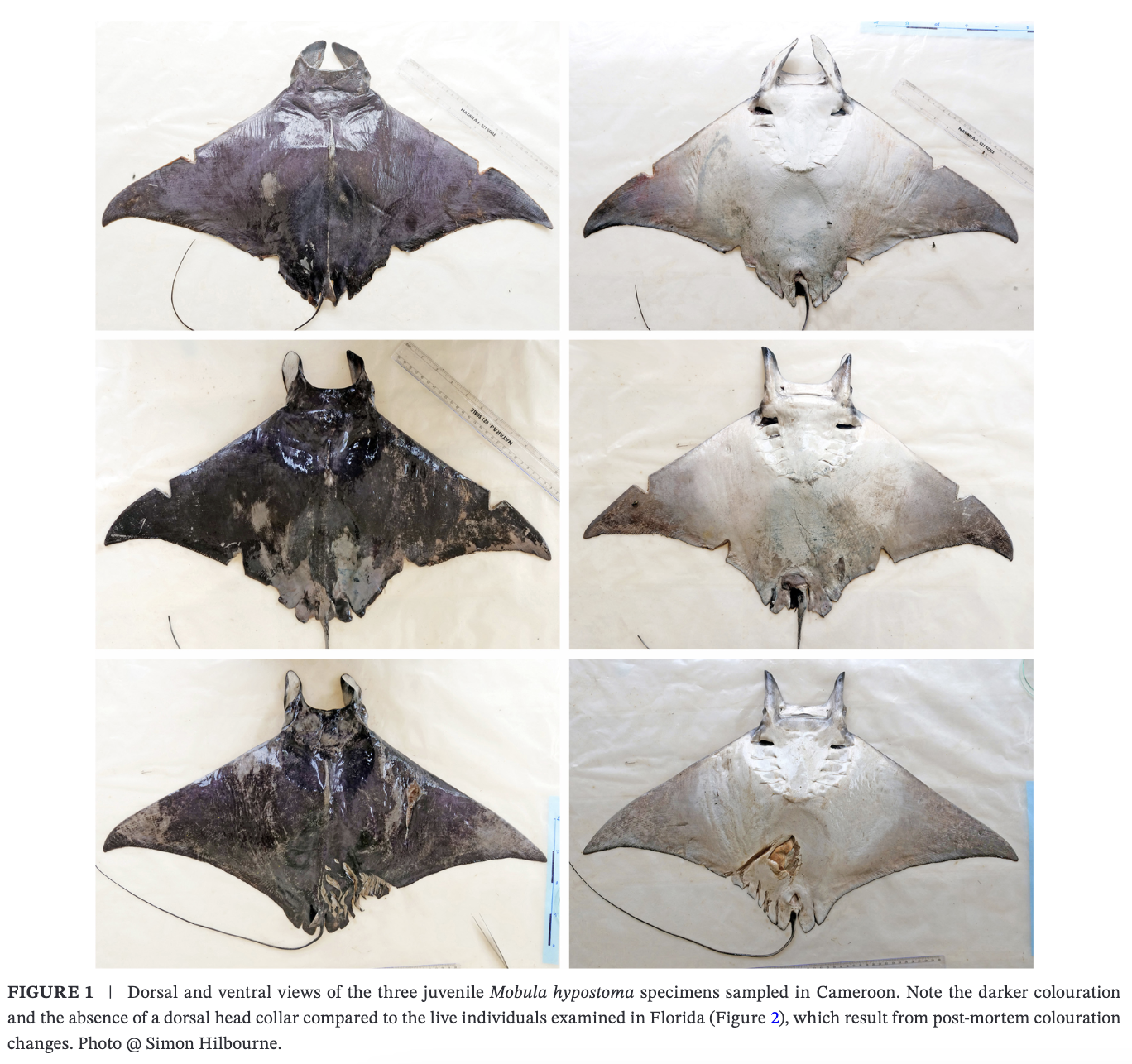Genetic and Morphometric Support for the Atlantic Pygmy Devil Ray, Mobula hypostoma (Bancroft, 1831), in the Eastern Atlantic Ocean
January 2025
Emily Humble, Atlantine Boggio-Pasqua, Aristide Takoukam Kamla, Kim Bassos-Hull, Stephen Bergacker, Marc-Alexander Gose, Simon Hilbourne, Betty Laglbauer, Ana Martinez-Lopez, Cedrick Fogwan, Cedric I. Biankeu, Guy M. W. Stevens & Giuseppe Notarbartolo di Sciara
Keywords: Genome Skimming • MinION Sequencing • Mitogenome • Mobula hypostoma • Mobula rochebrunei • Morphology • Morphometry • Taxonomy • West Africa





Summary: East Atlantic pygmy devil rays, Mobula rochebrunei, were thought to be synonymous with Mobula hypostoma, their western Atlantic counterpart, due to limited data. A recent discovery of three pygmy devil rays in Cameroon confirmed, using genomic and morphometric analysis, that they are the same species (The Atlantic pygmy devil ray, Mobula hypostoma). This finding demonstrates the species’ persistence in West Africa despite fears of disappearance. The study underscores the urgent need for conservation efforts to prevent their local extinction.
Abstract
“Manta and devil rays are a diverse group of globally endangered elasmobranchs with a complicated taxonomic history. The emer-gence of genomic techniques has significantly improved our understanding of species units in the group, yet there is one speciesof devil ray for which uncertainty remains. Mobula rochebrunei (Vaillant, 1879), a pygmy devil ray inhabiting tropical watersof the eastern Atlantic, was recently synonymised with Mobula hypostoma (Bancroft, 1831), its western Atlantic counterpart.However, since there have been no sightings of the species in West and Central Africa for several decades, the revision was basedon limited data, and further investigation was recommended. A dedicated monitoring effort in Cameroon recently led to the rarediscovery of three pygmy devil rays, providing a unique opportunity to build on recent work. We use a combination of MinIONsequencing and morphometric analysis to provide confirmation that pygmy devil rays on both sides of the Atlantic constitute thesame species. Crucially, our work highlights the persistence of pygmy devil rays in West Africa despite concerns of disappearanceand emphasises the need for urgent conservation action to avoid local extinction.”
Infographic
Infographic byJasmine Corbett
Author Affiliations
Royal (Dick) School of Veterinary Studies and the Roslin Institute, University of Edinburgh
The Manta Trust
Aix-Marseille Univ, Université de Toulon
African Marine Mammal Conservation Organisation
Sharks and Rays Conservation Research Program, Mote Marine Laboratory
Sarasota Dolphin Research Program, Brookfield Zoo Chicago
Evolutionary Biology and Ecology, Université libre de Bruxelles (ULB)
Tethys Research Institute
Funding
The Manta Trust
African Marine Mammal Conservation
National Geographic Society
Save Our Seas Foundation
Mote Scientific Foundation
Georgia Aquarium
Disney Conservation Fund
Department of Defense US Army Medical Research and Materiel Command
Contribution towards the Manta Trust's Strategic Plan
Goal 3: Strategic Objective 3.1 – All manta and devil ray species in the regions where we work are fully protected and conserved through species management plans.
Goal 3: Strategic Objective 3.2 - Key manta and devil ray aggregation sites in the regions where we work fall within protected areas that are effectively managed.
Goal 3: Strategic Objective 3.4 - The environmental drivers on manta ray populations are better understood to help determine the impact of the climate crisis and inform conservation measures.


